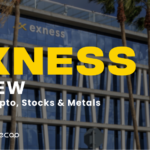Key Takeaways:
- Circle’s USDC goes live on Avalanche to assist the DeFi ecosystem.
- Avalanche customers can use USDC to deposit, withdraw, send and receive payments, and settle transactions. Circle’s developer APIs, modified to support USDC on Avalanche, are also available to developers.

Circle, a digital payments startup, has launched its USDC stablecoin on Avalanche. The primary purpose of stablecoin adoption is to allow developers and communities to interact with environmentally friendly platforms and accelerate the adoption of decentralized finance (DeFi).
USDC is the world’s fastest-growing dollar digital currency, with more than $40 billion in circulation as of December 2021. Developers and participants in Avalanche’s rapidly expanding ecosystem of DeFi protocols, enterprise apps, NFT marketplaces, and more will benefit from the integration, which will provide more smooth transaction and payment alternatives. Circle’s APIs, modified to support USDC on Avalanche, are also available to developers.
At the United Nations (UN) COP26 conference, Avalanche was recently acknowledged as a net-zero carbon output blockchain, ushering in a new age of eco-friendly, sustainable, net-zero digital transactions.
“Physical fiat currency is increasingly becoming a relic of the past – a trend which the COVID-19 pandemic has accelerated,” said John Wu, President of Ava Labs. “A fundamental restructuring of legacy payments and financial infrastructure is not only warranted but overdue. Together, Avalanche and Circle will pioneer solutions to these systemic challenges.”
Avalanche now supports USDC:
According to the official blog post, users will be able to deposit, withdraw, send and receive payments, and settle transactions with USDC on Avalanche.
The latest interface is intended to open up new transaction and payment alternatives for Avalanche’s fast-expanding ecosystem’s developers and participants. It includes, among other things, decentralized (DeFi) protocols, enterprise apps, and non-fungible token (NFT) marketplaces.
Developers, meanwhile, can take advantage of Circle’s broad set of developer APIs. Jeremy Allaire, CEO and co-founder of Circle said of adding USDC support to Avalanche at a time when the DeFi business is still growing exponentially:
“With USDC as the leading dollar digital currency for the decentralized economy, this integration will be instrumental for developers and communities looking to participate in one of the fastest, organically growing ecosystems in crypto.”
Circle’s support for USDC on Avalanche comes after the Centre Consortium, which governs USDC, announced earlier this year that it would provide access to a range of innovative blockchains pioneering higher speed and scalability at a lower cost to build a flourishing, linked digital economy.
Avalanche’s C Chain, for example, is one of the most extensively used smart contract blockchains for developing Ethereum-enabled applications and assets that are both cost-effective and quick. As a result of USDC’s extension on this chain of contracts, more developers should participate.
Expansion of the USDC:
USD Coin (USDC) is a stablecoin backed by dollar-denominated assets kept in segregated accounts with US-regulated financial institutions and redeemable 1:1 for US dollars. The creation of the CENTRE Consortium, a collaboration between Coinbase and Circle, was influential in the development of USDC.
Avalanche will join Hedera, Tron, Ethereum, Algorand, Stellar, and Solana as the seventh blockchain to use Circle’s USDC. Circle revealed intentions to expand USDC to roughly ten more networks earlier this year.
Over the last year, Circle has made considerable progress in assisting USDC’s growth from a low of $4 billion at the start of the year. As a result, the total supply of USDC is now over $41 billion.
USDC’s integration with Avalanche, which already has substantial traction in DeFi and ranks among the top five chains of total value locked, excites Circle VP of Product Joao Reginatto (TVL).
The current development is part of Circle’s ambition to make USDC available on more blockchain platforms, allowing users to take advantage of next-generation public chains’ speed, scalability, and cost-efficiency.











